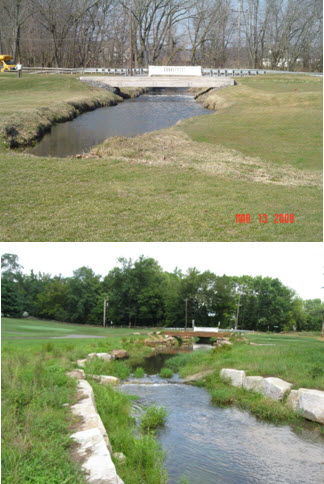Radon Awareness Success in Region 3
January, as National Radon Action Month, is a time to ramp up on radon awareness and celebrate the successes of the state indoor radon programs throughout the mid-Atlantic region.
Our mid-Atlantic partners have reached out to more than 2 million residents with information on what they can do to protect themselves from the dangers of radon.
Radon is a naturally occurring colorless, odorless radioactive gas, and is the leading cause of lung cancer among non-smokers, but testing for radon and reducing elevated levels when they are found can make your home healthier and safer.
Recognizing this, EPA and its state partners are highlighting radon testing and mitigation as a simple and affordable step to significantly reduce the risk for lung cancer.
For 2014, EPA awarded a total of $923,160 in State Indoor Radon Grants to the Delaware Department of Health and Social Services, the Pennsylvania Department of Environmental Protection, West Virginia Department of Health and Human Services, Virginia Department of Health, and the District of Columbia Department of the Environment. These grants will fund the states’ radon programs to address radon risk assessment, risk reduction and radon resistant new construction in homes and schools.





 One Mid-Atlantic community has a “trashy” idea. Salisbury, a small city located in eastern Maryland, recently installed netting devices designed to prevent debris from flowing into the Wicomico River. The Wicomico flows through the city and has had an issue with excessive trash. When rainfall occurs, trash and other debris is flushed into the city storm drains, which carries storm water and trash to streams, rivers, lakes and other water bodies. To resolve this problem, the trash nets fit over the end of the pipes, catching garbage before it flows into the river. They are tended by city crews and emptied periodically. The nets even have an overflow release function, which allows the nets to break away from the pipe if it starts to obstruct water flow. The net still remains tethered to the pipe so it doesn’t float away while water flow is restored. Salisbury was very pleased with the netting devices, and is planning to install more in the near future.
One Mid-Atlantic community has a “trashy” idea. Salisbury, a small city located in eastern Maryland, recently installed netting devices designed to prevent debris from flowing into the Wicomico River. The Wicomico flows through the city and has had an issue with excessive trash. When rainfall occurs, trash and other debris is flushed into the city storm drains, which carries storm water and trash to streams, rivers, lakes and other water bodies. To resolve this problem, the trash nets fit over the end of the pipes, catching garbage before it flows into the river. They are tended by city crews and emptied periodically. The nets even have an overflow release function, which allows the nets to break away from the pipe if it starts to obstruct water flow. The net still remains tethered to the pipe so it doesn’t float away while water flow is restored. Salisbury was very pleased with the netting devices, and is planning to install more in the near future.